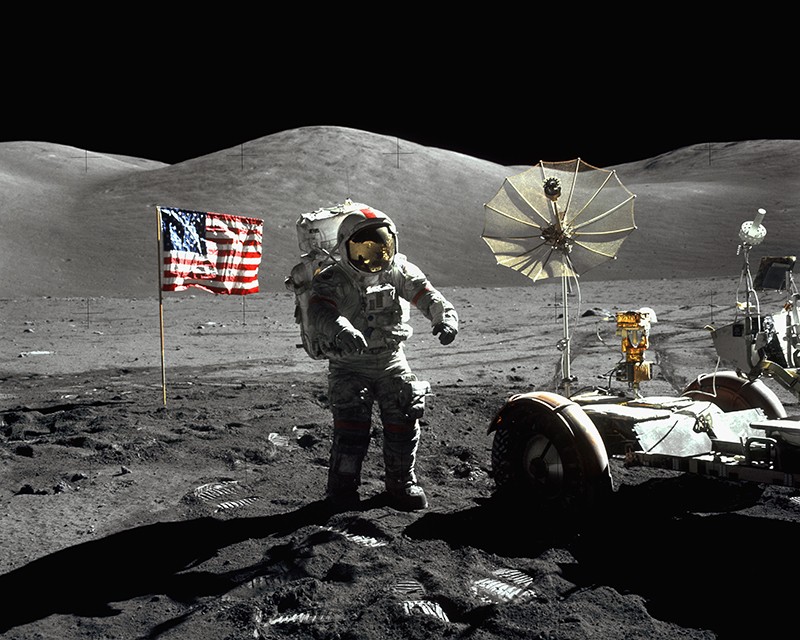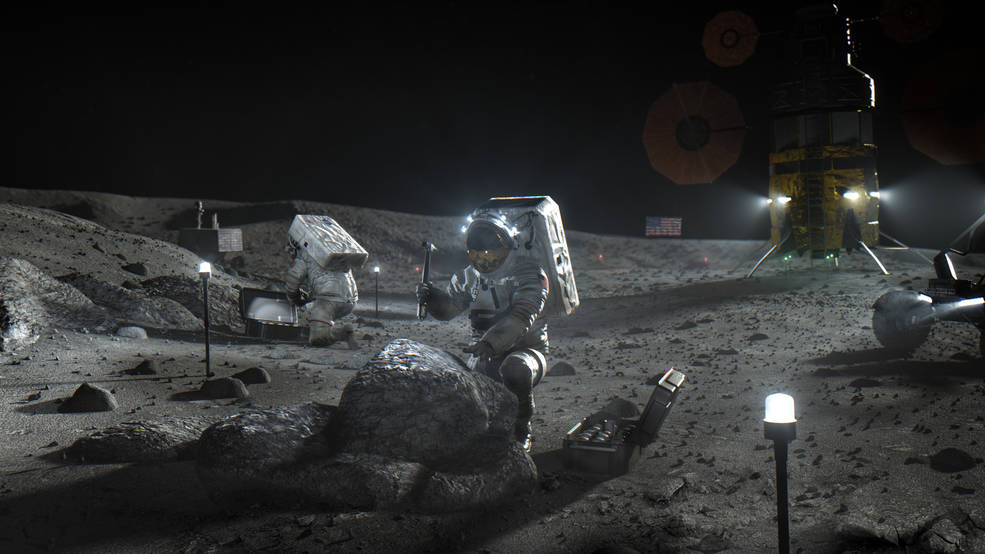
Why Exactly Does NASA Want To Return To The Moon?
NASA not only wants to put humans back on the Moon but set up a more permanent human residence. The agency plans to do this by working with different private partners and building a moon base named Artemis Base Camp. NASA has put a lot of time and money into the Artemis mission planned for 2024. This can bear the question of why NASA even wants to go back to the Moon.
The three main reasons the agency wants to return to the Moon are for discovery, economic opportunity, and inspiration for a new generation. There is a long list of additional reasons but these are some of the most important to the agency. All of which highlights a large number of benefits when returning to the surface of our Moon.
The last time a human stepped foot on the Moon was in 1972 through the Apollo missions. These missions showed incredible feats of technology and engineering. They also provided scientists with invaluable information. Almost 50 years later NASA plans to return and not just for a short period of time.
What Is Artemis?

Artemis is the upcoming mission back to the Moon that NASA has been working on for quite a while. The goal is to not only put humans back on the surface but set up a more permanent residence on the Moon. NASA plans on doing this with multiple missions along with working with private companies. The main launch vehicle for the mission is the Space Launch System or SLS. This is one of the biggest and most powerful rockets in the world. Sitting at the top of the rocket will be the Orion Module responsible for safely transporting humans to the Moon. In the process of setting up a base, NASA also wants to build a Moon space station named Gateway. This is meant to help with communication, Moon accessibility, allow multiple missions at the same time, and more.
Additionally, NASA recently selected SpaceX for the lunar lander contract. SpaceX won $2.9 billion to work on and develop a Starship lunar lander. NASA has even been working on next-generation xEMU spacesuits to facilitate better movement and safety on the surface of the Moon. All of this is planned to start in 2024. The overall goal of the Artemis mission is to prepare NASA for the bigger challenges of putting the first human on Mars. NASA makes it clear that they have a lot to learn on the Moon prior to going over 200 million miles away.
Why Does NASA Want To Return?

Discovery – As I mentioned before, it has been a long time since humans were on the surface of the Moon. Specifically, the first human stepped foot on the Moon in 1969 with the last human stepping foot in 1972. This means it has been just about 50 years since putting humans on the surface of the Moon. The Apollo missions were some of the most impressive and inspiring things humans have ever done. They also brought an immense amount of discovery. Between different samples and science, it helped us learn so much more about everything around us. While the Apollo missions were an incredible feat of technology and engineering, we know a lot more now. In the 50 years since the Apollo missions technology as a whole has been completely reinvented.
Agencies such as NASA have access to limitless technology that was not available during the Apollo missions. This technology and further understanding will promote new discoveries on the surface. Additionally, with the goal to set up a more permanent residence, a lot more complicated science will be possible. Another major downside of the Apollo missions was their time on the surface. It was very limited which took away a lot of opportunity for different experiments. On Artemis, this is planned to be completely different. With an entire base setup and plenty of astronauts, we will be able to have countless different experiments and discoveries. The discoveries we make on the Moon will have a direct effect on everyday life and future space exploration. The upcoming Artemis mission will help prepare NASA for a trip to Mars and beyond.
Economic Opportunity – Many people when thinking about the benefits of NASA and its missions ignore the economic impact. NASA as a whole and especially missions such as Artemis provide a big positive impact on the economy. Looking here on Earth NASA provides tens of thousands of jobs to some of America’s brightest individuals. As far as the upcoming missions to the Moon the economic impact will be massive. Artemis missions will enable a growing lunar economy by fueling new industries, supporting job growth, and furthering the demand for a skilled workforce. The amount of work and opportunity in the process of setting up a Moon base will be extraordinary.
A small example could be the expected impact on the private space industry. NASA is a great agency but they could always use some help. NASA knows this and is constantly looking for opportunities to work with different private space companies. Building a base on the Moon will be no exception. NASA will likely work with a large number of private companies to help launch supplies, humans, and more to the surface and back. All of which will help build up and provide opportunities to large and small private companies. A perfect example is the lunar lander contract I mentioned prior. NASA chose SpaceX to build a lunar lander, granting the company $2.9 billion to develop and build one. This large sum of money helps SpaceX grow, provide jobs, and positively impact the economy.
Inspiration – The final reason NASA provides for why the agency plans to go back to the Moon is the inspiration for a new generation. Through the Artemis mission, NASA knows how important inspiring the next generation is. The kids that watch NASA put humans back on the Moon are the same kids who might end up being the first humans to step foot on Mars. NASA specifically points out, they plan to engage and inspire new audiences through the Artemis mission. A big difference between the Artemis missions and Apollo missions is the people who stepped foot on the Moon.
Artemis is making sure to land many different people on the surface including the first woman and first person of color. This will help kids around the world get excited and inspired no matter what they look like. This is necessary for the future of NASA and space exploration as a whole. The Apollo missions had the entire world’s attention and inspired all kinds of people around the world. When humans do incredible things in space that seems to be the common theme. Artemis and NASA’s goal to put humans back on the surface of the Moon will have a similar positive effect.
Conclusion
NASA is planning on putting humans back on the surface of the Moon by 2024. The agency not only wants humans back on the surface but to set up a large base and more permanent human residence. This will facilitate incredible science and discoveries. The agency also has three main reasons for returning to the planet. NASA is going back to the Moon for discovery, economic opportunity, and to inspire a new generation. These are just three reasons out of many for why the agency wants to go back. It has been almost 50 years since the last human stepped foot on the surface of the Moon. We will have to wait and see the outcome of the Artemis missions and their impact on our future.
